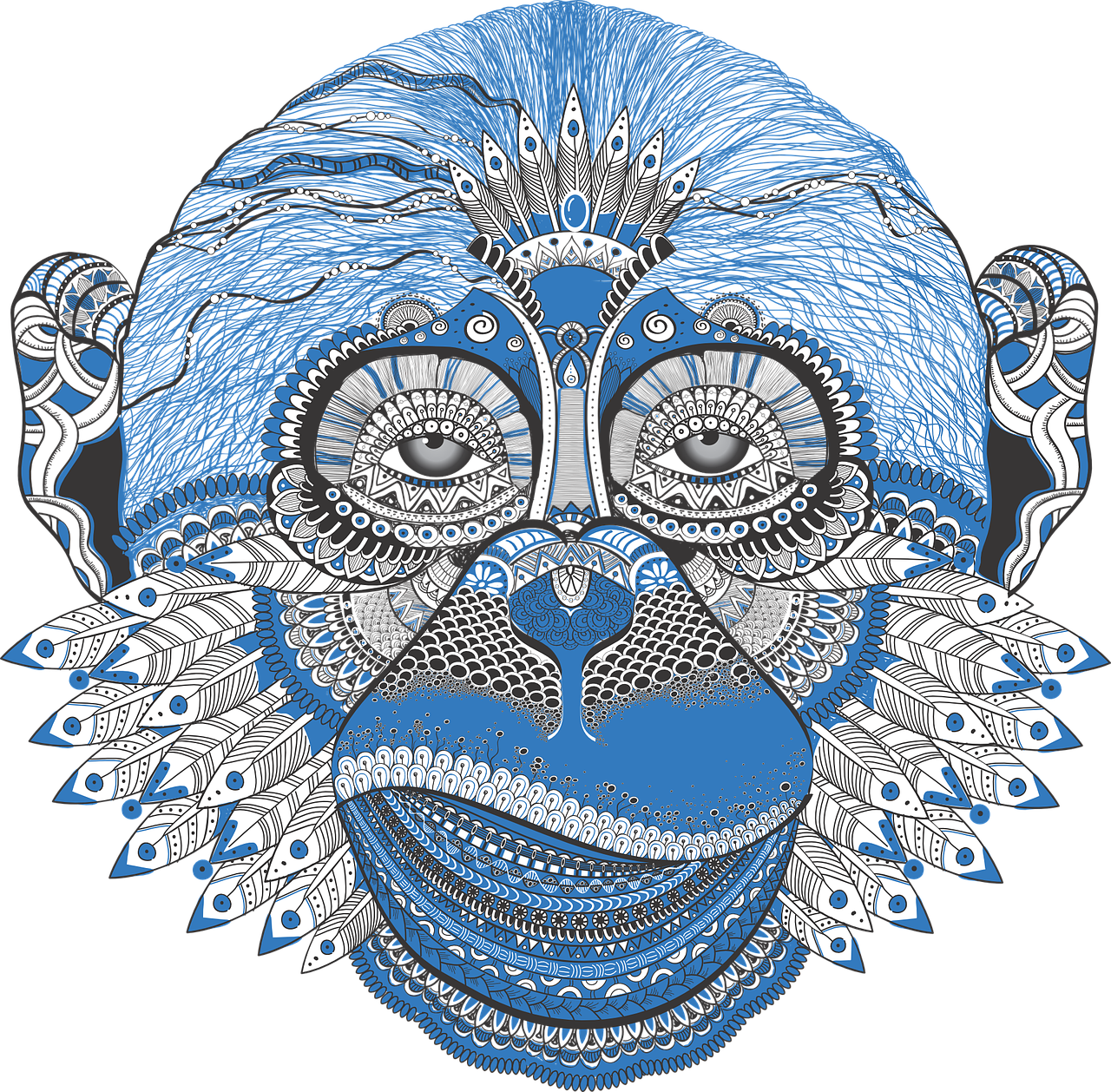 Submitted by LI - Executor on
Submitted by LI - Executor on

pixabay.com
In the West, we sometimes hear the phrase “having a monkey on one’s back.” Not surprisingly, the earliest documented use of this phrase comes from ancient Kemet (Egypt). The first light of the monkey myth begins with a powerful man who not only deeply influenced the beliefs of ancient Kemet but went on to have a profound impact on the philosophy, language and mysticism found in ancient Greece and Rome.
His name is Tehuti, also known as Djeheuti, Djhowtey and Zehuti. Ancient Greeks and Romans called him Thoth and Hermes. Tehuti is the great scholar, messenger, and deity of writing, wisdom and learning. Tehuti, characterized with the head of a baboon, (sometimes an ibis) is credited with inventing writing, mathematics, engineering, astrology and the 365 day calendar in ancient Kemet. In the form of the baboon, he is known to be the premier scribe and one who thinks well.1 The baboon which is one of Tehuti’s animal symbols connects him to the illustrious and dutiful profession of scribes, divine measurement, magic and higher learning. Tehuti represents pure genius in ancient Kemetic history. His gifts were remarkable and far-reaching. He is known as a counselor and mediator of the gods and an assistant to Ausar in judging the souls in the underworld, also called Duat. As the symbol of the moon, his genius helped to regulate civil society. With his trusty guide and servant baboon mascot, Tehuti helped to create a renaissance of innovations and insights that created ripples in every direction of the known world.
In ancient Kemet, the name of this baboon is called Hedj wer. Monkey belong to the house of Sebek, in Kemetic pantheon. Sebek is the crocodile god of the waters who is also a protector, a healer and a force to invoke for vengeance. He is associated with Heru and is one of the fiercest guardians of the underworld.
The sacred monkey totem in Kemet is depicted as a white-faced baboon, sometimes shown looking over the shoulder of a diligent scribe.1 Some images found in Kemet depict god Tehuti sitting and taking dictation from a baboon seated on an altar. In the shape of the baboon, Tehuti directs and watches over the diligent efforts and practices of the scribe. The baboon is also a protector, inspirer and important guide of the profession. Baboons are also servants of Tehuti, carrying out important tasks, like monitoring the sprout of water clocks and guiding the process of weighing the hearts of the deceased.2
These are important activities of a deity who is thought to be a great measurer of all things. From the references provided it appears that the baboon is one of the important animal guides of the profession of scribe and those who are knowledge holders. Many professions in ancient communities had guiding animal totems. For instance, the society of chiefs could promote a lion or hawk guide, healers could have a dove emblem, and warriors could have a tiger or a leopard as a guide.1
Monkey Hedj Wer is seen as a mighty magician and skilled at reading all sorts of signs and hieroglyphics of the most sublime type. Sometime the baboon and Tehuti were two distinct persons but many illustrations show the two merged together, Tehuti as a man with the head of a baboon and in some cases the baboon proving itself a powerful icon of Tehuti himself. The baboons served the cause of the scribes, and they are symbols of the most powerful scribe himself, Tehuti. Baboons are the perfect reference because as simians they are carriers and decipherer of natural laws and mystical signs that was communicated to scribes. Also knowing how arduous the writing profession can be when we consider the whole time-consuming business of researching and organizing notes and images, a monkey on one’s back points to the passion and discipline one needs to organize and create books of reference and quality, particularly in an era when all these things were done by hand.
Early scribes were in a very time-consuming profession where most of their time was divided between themselves, the blank page and their various unseen inspirations. Writing is an all absorbing habit and discipline that may suggest how the phrase, a monkey on one’s back first came about. But the monkey looking over one’s shoulder or being on one’s back was not a negative sign but more of a symbol of inspiration and connection to esoteric forms that where perceived as powerful and sacred. For the profession of the scribe, the monkey guide was one of the many types of unseen inspirations that encouraged this unique profession. Not quite the beautiful woman muse that we are use to but a muse nonetheless.
“There is a story in the Sinbad cycle about a tormenting ape-like creature that mounts a man’s shoulders and won’t get off, which may be the root of the term that we use today.” 1 Although it is likely that the metaphor continues before ancient Kemet. It could be even older but Kemet is where we see documentation of it emerging. Unlike the Kemetic metaphor, the monkey on your back in the Arabian Nights stories is not a good sign implicating the sacred art of writing, sign reading, magic and measuring but a curse. It is one place where the idea begins to degenerate from an auspicious sign to one of foreboding. It is not clear if the monkey on the back is a form of cursing in this reading, for monkeys in many mythologies all over the world are servants to shamans and priests with decided more power. They could be lone initiators but most sacred totemic beliefs provide a powerful Mother or Father figure somewhere in the background. Meaning they are usually working for somebody or on some great persons behalf. They are usually sent or maybe a goddess or god in disguise. In the Ramayana, Hanuman is the servant of Rama; in Kemet, Hedj Wer works on behalf of Mara and Heru and in Asia, monkey scholars and scribes work on behalf of Buddha and other like Oriental sages and wise ones. Thus a monkey on one’s back might be an initiatory stage for certain types who may be connected in some way to ancient languages, story telling and understanding sublime knowledge not accessible to others.
In 1860s, the term reappears again. This time it refers to a person who is carrying rage, anger and resentment, which is like an animal agitating their minds everyday. The images of the time support this with men and women shown with a fierce creature causing bewilderment, mental agitation, even madness. In the 1930s, the use became popular in narcotic jargon. A person with a monkey on his back is thought to be obsessive, addicted and even paranoid. It is definitely a sign of a bad habit like taking drugs. It became the perfect symbol for alcoholism and drug abuse. Don’t let that be the monkey on your back, drug rehabilitation centers are always available to give you the help you deserve. From there it became increasingly a means to describe a person who was focused in a negative preoccupation or absorption into some activity or goal. Anything that is nefarious or obsessive can be termed, having a monkey on one’s back. Those who are determined in purpose and convicted are called passionate and focused but not bewildered by a bad presence sitting on one’s back. This is very far removed from the older Kemetic form of a benign ape sharing wisdoms, deciphering sacred code and guiding the construction of papyrus.
The original meaning connected to Tehuti, observes an ape looking over one’s shoulder as an important act that allowed incredible and innovating cures, design and philosophy to emerge. The crafts of scribes is a habit of diligence, dedication and love needed to cultivate meaning, to reveal the hidden and to translate it into hieroglyphics, signs, and colors. More recently, in Western culture, this habit has become to suggest addiction, madness and obsession. It may be just another example of ancient myths and symbols falling into ruin or it could be insight into the hidden cycles and patterns of writers, one raw genius, the other an addict. Both with a clamorous and feisty monkey on their back.
Sources:
H-Net org
Ancient Egypt
The Arabian Nights Entertainments by Andrew Lang and Richard Francis Burton, Publication: Raleigh, N.C. Alex Catalogue, ebook, netlibrary.com (1850)
Word Wizard
Egypt Epiphany
Matomah Alesha is a writer, artist, poet and an independent researcher with an interest in native culture, ancient mythology and goddess folklore. She has over ten years of experience as a researcher, writer, freelance artist and in healing with goddess ritual and mysticism. Born and raised in San Francisco, she now lives in Tucson, Arizona. For more information on the mythology and folklore of sacred simians, see Sako Ma: A Look at the Sacred Monkey Totem by Matomah Alesha, Matam Press, 2004.
Article found on http://newagejournal.com/understanding-the-monkey-on-your-back
- 881 reads